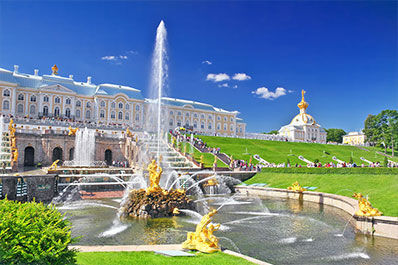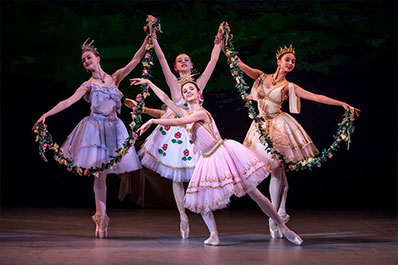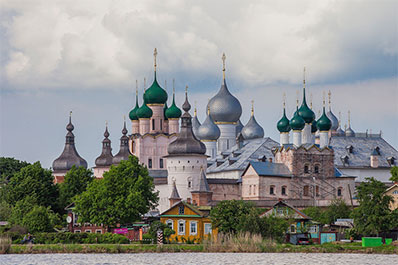In Russia everything is intense. From the stirring notes of Stravinsky’s string quartets to the pitch-black, heady tea from samovars; the enigmatic Russian soul delights in all things profound. This distinctive, somewhat dark outlook on life has given rise to a culture so exceptional that it has no comparison. To experience Russian culture tourism at its most refined, the former imperial capital, Saint Petersburg, is the place to go. In contrast Europe’s biggest city, Moscow, turns Russia’s age-old culture on its head; with a refreshing mix of communism, medievalism and modernism. Meanwhile, further afield in Russia’s regions, travel back in time on a Russian cultural tour and appreciate the Slavic way-of-life and its 1000 year old traditions.
How to Discover Russian Culture?
- Palaces: Uncover unparalleled refinement in the homes of the Tsar and the imperial court.
- Theatres: Ballet, opera and classical music are to this day a coroner stone of Russian culture. See the classics in Saint Petersburg or experiment with more contemporary performances in Moscow on a culture trip in Russia.
- Villages: Much of Russian heritage is intertwined with the rural way of life. Visitors to Russia’s idyllic villages are able to try their hand at many traditional crafts.
- Museums: Since Peter the Great’s campaign to modernise Russia, museums have been at the centre of public life. Some of the world’s most prestigious museums, such as the Hermitage and the Tretyakov gallery, can be found in Russia.
Saint Petersburg
Founded in the enlightenment era, Saint Petersburg was the city that sparked Russia’s cultural blossoming. At its height, it boasted a theatre with the world’s biggest stage, one of Europe’s first museums and over 50 palaces. Though Saint Petersburg is no longer the seat of government, it still rules supreme as Russia’s cultural capital. Indeed, the whole of Saint Petersburg’s city centre is a UNESCO World Heritage Site. Simply taking a stroll along the city’s canals, edged by palaces stretching to the horizon, is a lesson in architectural design. The grandest of these royal residences, The Hermitage, consists of seven interconnected palaces which houses the world’s largest art collection second only to the Louvre.
The allure of Saint Petersburg - the city of white nights and golden domes - brought some of the age’s greatest minds to its gilded gates. Trace the footsteps of Russia’s most revered writers - Dostoevsky, Pushkin and Gogol - in carefully preserved apartments and relive the glamour and grime of their characters’ lives on literary tours that will take you to cafes as lavish as ballrooms and to working farmers' markets like Sennoy Ploshad, where Crime and Punishment was set.
In the evenings, join the high society of Saint Petersburg for hours of breathtaking performances. Though Moscow may boast the world’s largest ballet company, Saint Petersburg is still the prima donna of Russia’s theatre scene. See the great Russian ballets - Sleeping Beauty, Don Quixote and The Nutcracker - on the Mariinsky Theatre’s stage where they were first premiered centuries ago. And, in the sumptuous surroundings of the Tsar’s private theatre, audiences come from allover the world to be riveted into their seats by the stirring notes of Stravinsky’s classical masterpieces or moved to tears by the amorous arias of Tchaikovsky’s operas.
Moscow
Seven hundred kilometres south east of Saint Petersburg, ancient Slav traditions meet contemporary culture in Europe’s biggest city: Moscow. At first glance, tourists often mistake Moscow for a modern city. They go to see the world-class space museums, futuristic art museums, secret soviet bunkers and giant ice skating rinks. While it may be known for its imposing Soviet architecture and glitzy high rises, its history (which by far surpasses Saint Petersburg’s) makes Moscow a hidden cultural treasure.
Long before Peter the Great felt the urge to rule from a sea port, Moscow was the beating heart of Russia’s religious and cultural affairs. Unlike Saint Petersburg, Moscow’s history has a distinctly Eurasian flair; ballerinas vied for attention with cossack dancers and the colourful painted wood work of central Russia was prized just as much as western artwork. To this day, Moscow’s taste for the unconventional can be seen in its most famous sights. Within the regal auditorium of the Bolshoi theatre, ballets are served with a refreshingly contemporary twist. The Tretyakov Gallery, with its renowned collection of Russian icons and Repins, has expanded to include a whole building dedicated to modern Russian art. And, even within the Kremlin’s sacrosanct 800 year old walls, one can find an all glass, cutting-edge theatre amid the ancient monasteries and palaces.
Regardless of whether you embrace Russia’s drinking culture or not, the sheer variety of sights in Russia’s capital is guaranteed to leave you discombobulated but thirsty for more!
The Regions
Though Russia’s culture may have blossomed in its sophisticated cities, its roots can be traced to the humble Russian village. Unlike Moscow, which was burnt to a cinder when Napoleon invaded, and Saint Petersburg, which was obliterated by the Nazis, many Russian villages have remained unchanged for centuries. Tucked away in thick pine forests, wooden churches still stand and traditions live on. Many of Russia’s most iconic crafts such as the matryoshka, vologda lace and the samovar were born in villages and these traditional crafts have been carried on by generations to the present day.
While picturesque villages can be found throughout Russia, the countryside bordering Moscow is ab particularly popular destination for cultural tourism in Russia due to its communities of craftsmen. Named the Golden Ring, Russians and foreigners alike travel to these dozen pre-medieval villages that encircle Moscow to admire, acquire and even learn to make the unique handicrafts found here. In Khotkovo - the birthplace of the matryoshka - visitors are welcome to try their hand at carving and then patiently painting their own doll. A short drive away, the high-quality clay deposits in the villages of Gzhel mean that the intricately patterned, blue and white ceramics that bear the region’s name are world-famous, while the painted metal trays that hold the fine Gzhel tea sets are made in Zhostovo.
Wherever your artistic sensibilities lead you to, you’ll be sure to see the keystones of Slav culture, like izbas (log houses with large ovens at their centre), samovars and balalaikas (guitar-like instruments), in any Russian village. Just be sure to keep an eye out for Baba Yaga, the legendary Russian witch, while travelling into the ancient villages of Russia - it’s rumoured that along with her appetite for children she has soft-spot for tasty travellers!




